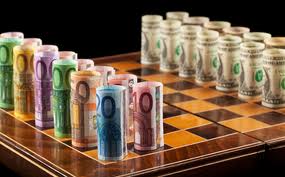 Learning to trade is a process, and it is same for everyone. The traders that think they are exceptions to the process of trading education generally learn the hard way that they confuse bull markets for genius or market conditions for skills. It is easy to lose or make money in the markets, the hard part is to make money consistently and keep it. Here is the process:
Learning to trade is a process, and it is same for everyone. The traders that think they are exceptions to the process of trading education generally learn the hard way that they confuse bull markets for genius or market conditions for skills. It is easy to lose or make money in the markets, the hard part is to make money consistently and keep it. Here is the process:
#1 LEARN TO LOSE SMALL
When you start trading you can save your self a lot of financial pain and trouble by simply risking no more than 1% to 2% of trading capital per trade. If you have a $50,000 account you have to trade a position size than limits your losses to $500 to $1,000 on any one trade through the use of stop losses. This level of risk will allow you to only be down only 10% to 20% after a string of ten losses instead of losing 50% to 90% of your account with huge trades. Do yourself a favor and skip the part where you blow up your account during the learning process. Your first edge over others is managing the risk of ruin, by trading small you will succeed while others fail.
#2 LEARN TO BREAK EVEN
After you learn to trade small and lose well the next step is to get your wins and losses even. Instead of losing money after 10 trades you start to break even. A few big winners may make you profitable or simply breaking even with a 50-50 win/loss ratio where wins and losses are equal after a string of trades. Regardless you have to learn to break even before you can ever become profitable. Generally it takes self control and discipline to get to the even stage. Randomness should allow traders to break even if they trade small and without pride, fear, or ego interference. Your second edge is self control, by trading the chart and not your emotions you will have an edge over those with no self control.
#3 LEARN TO LIMIT DRAWDOWNS IN MARKETS THAT ARE NOT CONDUCIVE TO YOUR METHOD
Learning when not to trade is as important as how to trade. Some of the best things a trader can do is nothing when they do not see good set ups or the price action makes no sense. Some of my very best trades was the ones I decided not to take because an edge was not there or the risk/reward was not worth the risk. The third edge you can have is being very picky about the trades you take and going to the side lines while others are losing money trading through chaos.
#4 LEARN TO BE PROFITABLE
Profitability happens when you have a method that consistently makes more money than it loses. Profitable trading is about bigger wins than losses. Regardless of your winning percentage, time frame, or beliefs all that manners is a positive expectancy based on historical price action. When you follow a proven methodology and system you will have an edge over those simply trading their own opinions this is your fourth edge.
#LEARN TO KEEP THE MONEY YOU MAKE
Even after you make the money you have to keep it. Many successful traders give back the majority of profits by drifting away from what made them their profits in the first place. Never stop growing and learning to improve your process never throw caution to the wind and gamble. Don’t start drifting into a method or system that you do not thoroughly understand , stick with the core principles that got you the money in the first place. Research your trades and see what causes losses and where your profits really came from. Adjust to become better doing more of what works and none of what does not.Your fifth edge is to never stop learning, growing, adapting, and getting better as a trading.
“The secret to being successful from a trading perspective is to have an indefatigable and an undying and unquenchable thirst for information and knowledge.” -Paul Tudor Jones